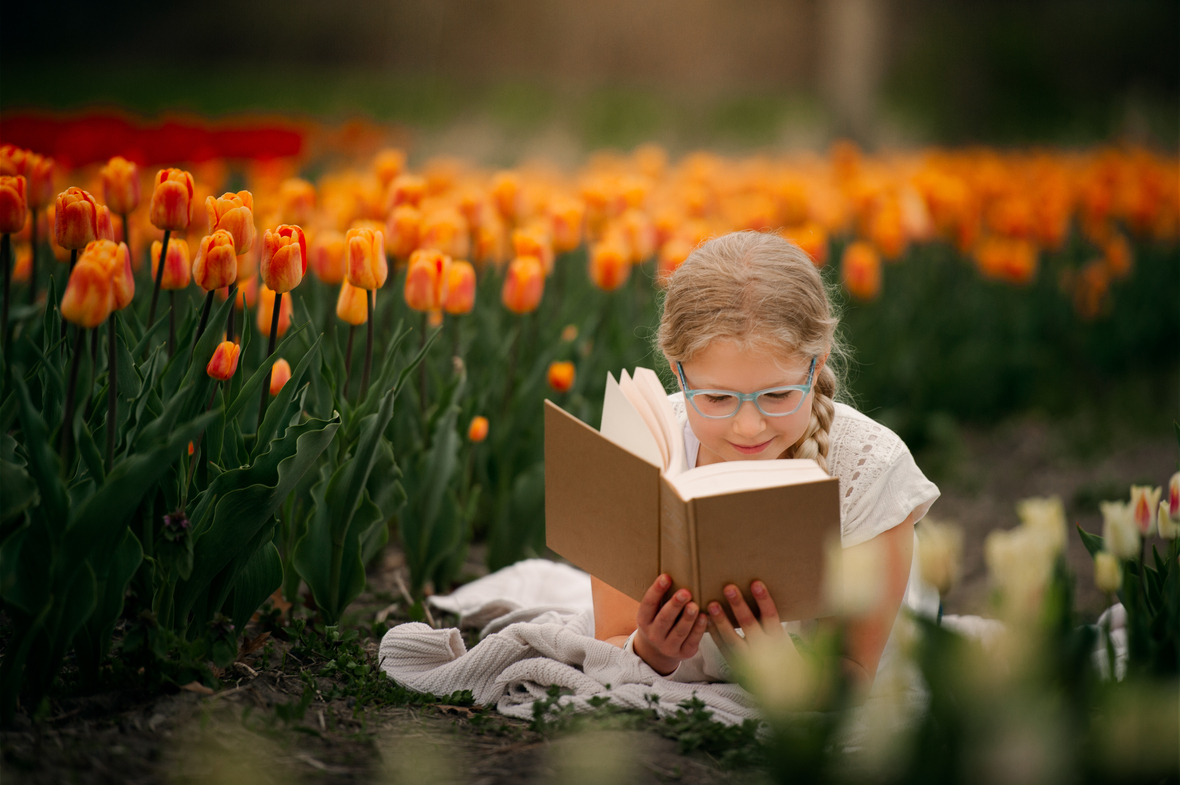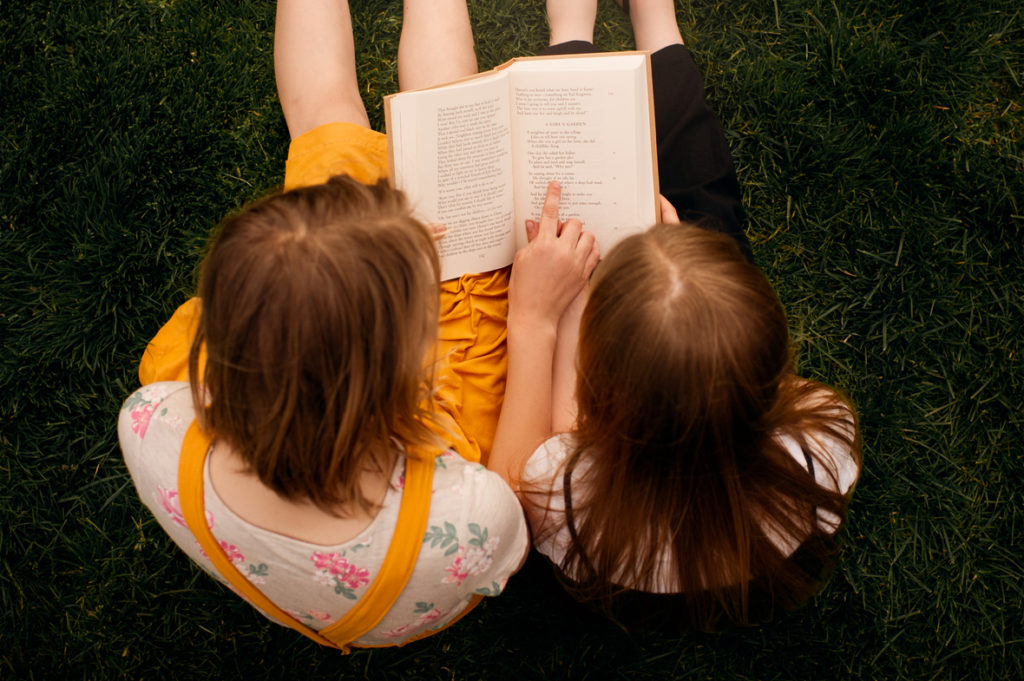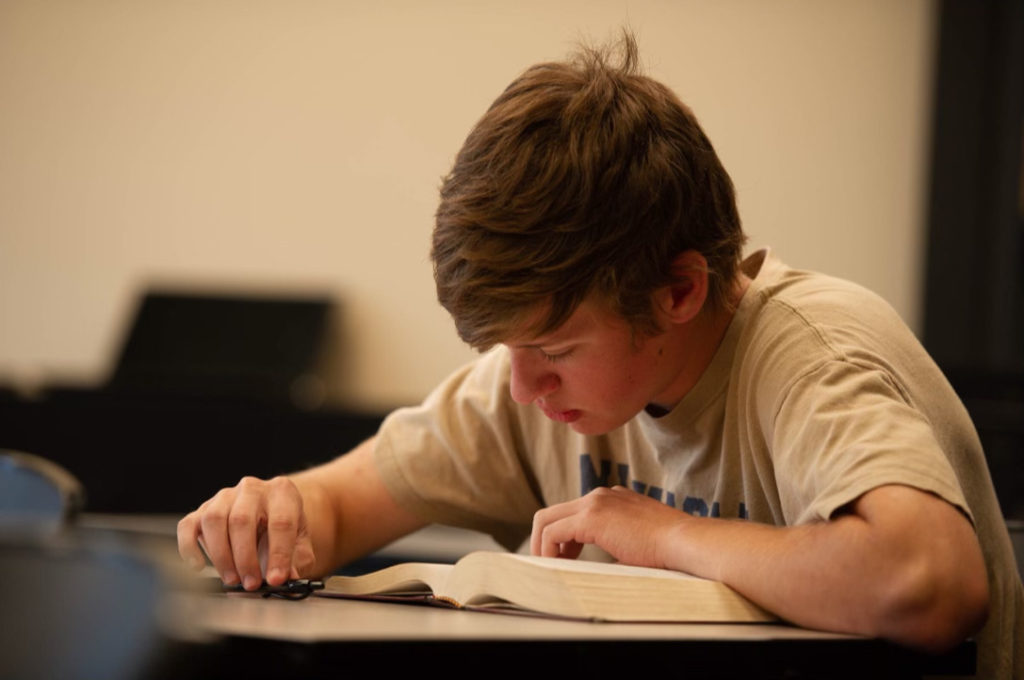
At Calvary Schools, we are very intentional and careful about what books we put in front of our students.
How To Choose Books That Are Worth Reading
By Ben Sytsma
Principal
Calvary Schools of Holland
It’s a wonderful feeling to be absorbed in a good story. I can remember as a young child being ecstatic when my mother would pull out the next book in the Laura Ingalls Wilder series and the new story would begin. My siblings and I gathered around, waiting to hear what would happen next, and begging her to continue reading the story even after listening for an hour.
I also remember, some years later, sitting on the edge of my chair as a close friend retold a meaningful story in their life from the past year. I hadn’t seen this friend in a year, and we caught up by sharing life stories that had impacted us. He shared how a specific book that he read recently showed him new ideas and a better way for him to live in a Christ-like manner.
Stories captivate us like little else does. Stories inspire us towards ideas or ways of living. The best way to share good stories together is through reading and responding to them together, in community.
Since stories have a strong ability to shape who we become, it is of great importance that we read books that are full of what is good, true, and beautiful. Charlotte Mason called these types of books “living books”.
“One more thing is of vital importance; children must have books, living books; the best are not too good for them; anything less than the best is not good enough; and if it is needful to exercise economy, let go everything that belongs to soft and luxurious living before letting go the duty of supplying the books, and the frequent changes of books, which are necessary for the constant stimulation of the child’s intellectual life.”
– Charlotte M. Mason
At Calvary Schools, through our partnership with Ambleside Schools International, we are very intentional and careful about what books we put in front of our students. There are a few different aspects that make a book a living book and worthy of reading.
First and foremost, it must be nourishing to the mind. Mason often compares knowledge and reading to digestion. We want to give our students good food for their minds. Books should be full of ideas and things to ponder. Stories should not be simply summaries or facts, but should be rich and engaging to the mind, and full of wonderful ideas to consider as well as beautiful characters and people to look up to.
Also, living books are of high literary quality. They use beautiful language and descriptions to enrich the story or the writing. Whenever possible, living books are written in a narrative style that allows the reader to easily engage with and encounter the story and the characters or people involved, granting easy access to living ideas.
Another important aspect to consider when selecting books is the moral teachings of the author and the book. What are they inspiring children towards?
In reading Carry On, Mr. Bowditch, students are inspired towards living in joy and peace amid difficult circumstances and the value of perseverance. In the reading of This Country of Ours, students meet George Washington and become friends with a great leader who led out of humility and love for his fellow countrymen. In science, students study the human body, the intricacies of anatomy, and how complex God created our bodies to be.
The content of a book and what the book inspires children towards is extremely important, as what children are inspired towards affects who they become. Remember, what we love is what we become most like.
What do we do with sin and evil in the world? How do we share difficult ideas or events with children without inspiring them towards that which is less than beautiful? We would not want to present them a book that inspires unkindness, cruelty, or selfishness. However, it is also important that we do not ignore the sin and evil of the world. Instead of ignoring the evil in the world, Calvary Schools finds books that show evil for what it is—evil.
More specifically, we choose books that show evil as evil, and good as good. For example, in early elementary, students read many tales and fables that teach the moral imagination at a young age and help children see good as good, and evil as evil. In later years, students read about a dystopian future in Fahrenheit 451, demonstrating to them the dangers of censorship, anti-intellectualism, and various uses of technology while at the same time inspiring students to stand up for what is right and to value meaningful relationships with people.
Lastly, it is also important to remember that reading should be delightful and enjoyable. Whenever we are choosing what books to put in front of our students, we are also choosing books that are well loved throughout history by many people, in many places, and at many different times. We want to give students the best of what is available and for them to take great joy in reading the living books that great minds have pondered for many generations.
“For the children? They must grow up upon the best . . . There is never a time when they are unequal to worthy thoughts, well put; inspiring tales, well told.”
– Charlotte M. Mason, Parents and Children, p. 263
 Ben Sytsma is Principal of Calvary Schools of Holland. He formerly taught 5th grade at Calvary and also held the role of Assistant Principal of the elementary campus. Mr. Sytsma completed his Bachelors in Education and is currently pursuing his Masters in Education at Dordt University. He is a graduate of the Ambleside Master Teacher Training Program and has been on staff at Calvary Schools of Holland since 2014.
Ben Sytsma is Principal of Calvary Schools of Holland. He formerly taught 5th grade at Calvary and also held the role of Assistant Principal of the elementary campus. Mr. Sytsma completed his Bachelors in Education and is currently pursuing his Masters in Education at Dordt University. He is a graduate of the Ambleside Master Teacher Training Program and has been on staff at Calvary Schools of Holland since 2014.


